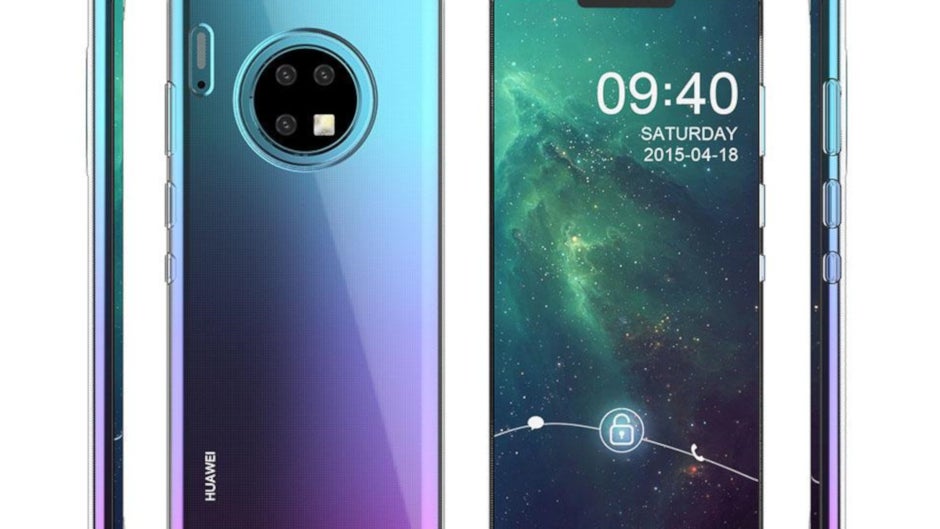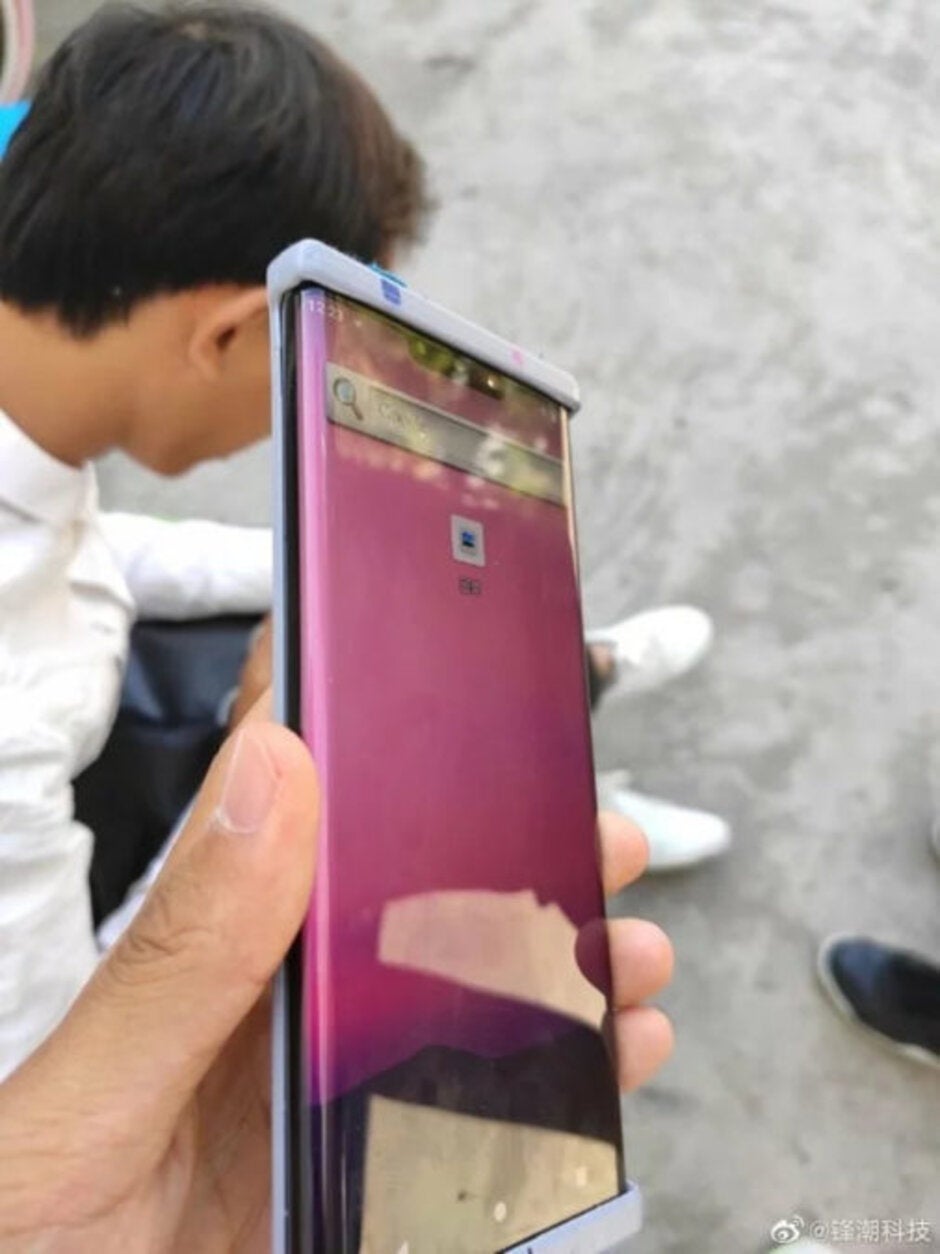Huawei Mate 30 Pro and its waterfall display star in new live photo

The latest real-life photograph of the Huawei Mate 30 Pro surfaced today on China's micro-blogging site Weibo (via Android Authority). Even though it was housed in a case, we could still easily spot the curved waterfall display with a side that drops straight down at close to a 90-degree angle. The wide notch at the top of the display also makes an appearance. The new Mate 30 line is expected to be unveiled on September 19th.
The top-of-the-line model, the Mate 30 Pro, will reportedly feature a 6.6-inch Super AMOLED display sporting a QHD+ resolution and a 90Hz refresh rate. The 50% faster refresh rate will allow for buttery smooth scrolling and improved graphics for mobile game players. This isn't the first time that photos of the Mate 30 Pro have appeared. Last month, the phone was photographed wearing the same case as the one seen in today's picture, but from the opposite angle. The back of the phone and the circular camera module were disguised by the case.
Huawei says that any trade talks between the U.S. and China must go through the company
The homegrown Kirin 990 chipset will be under the hood of the Mate 30 Pro. The chip is designed by Huawei's HiSilicon unit and manufactured by TSMC using its 7nm process. Not only does it include a Neural Processing Unit (NPU) for AI/Machine Learning capabilities, the chip also includes an integrated 5G modem. A quad-camera setup is on the back with two 40MP cameras (primary + Ultra-wide), an 8MP telephoto and a Time of Flight (ToF) depth sensor. The latter measures the time it takes for infrared light to bounce off a subject and return to the camera. With this data, the Huawei Mate 30 Pro will be able to compute more precise depth measurements to improve the bokeh effect on portraits shot by the phone.

Photo of the Huawei Mate 30 Pro shows off its waterfall display
A 4500mAh battery is expected to keep the lights on, and because of the U.S. supply-chain ban, we could see an open-source version of Android pre-installed. This means that the Mate 30 line will not have the Google Play services version of Android installed, nor will it ship with Google's core Android apps including the Play Store, Gmail, Calendar, Search and others. However, the head of the manufacturer's consumer devices group, Richard Yu, hinted at IFA last month that it is working on a workaround that would allow Google's apps to be downloaded on an open-source version of Android.
Meanwhile, Huawei says that it just might hold the key to getting its name taken off of the U.S. Commerce Department's Entity List. That would allow the company to once again purchase components and software from U.S. suppliers. According to Bloomberg, the company's Chief Security Officer Andy Purdy said the other day, "Can I imagine a trade deal where the U.S. government doesn't agree to talk to us? No, I can't." The executive pointed out something that we've said numerous times; the ban against Huawei is hurting U.S. companies more than it is negatively impacting the Chinese manufacturer. That is because Huawei spent $11 billion on its U.S. suppliers last year and this amounts to revenue that will be impossible for these U.S. firms to replace. Take Micron Technologies for example; this U.S. memory chip supplier's top customer in 2018 was-you've got it-Huawei.
And while U.S. President Donald Trump has said in the past that he would consider using Huawei as a bargaining chip in order to get better terms for a U.S.-China trade deal, Trump has recently walked back that comment by saying that the U.S. will not do business with Huawei. The manufacturer is seen as a security threat in the U.S. because it can be compelled at any time to use its devices to spy on U.S. consumers and companies.
Follow us on Google News












Things that are NOT allowed:
To help keep our community safe and free from spam, we apply temporary limits to newly created accounts: